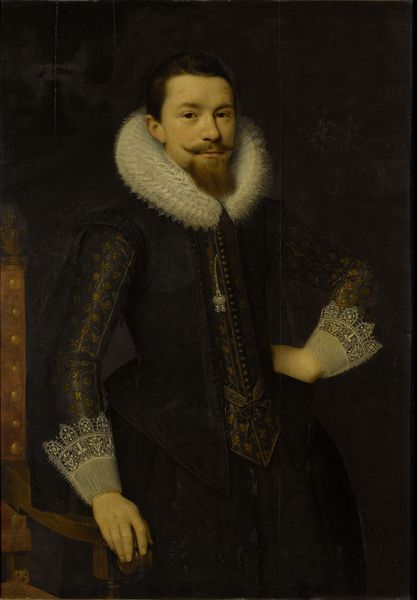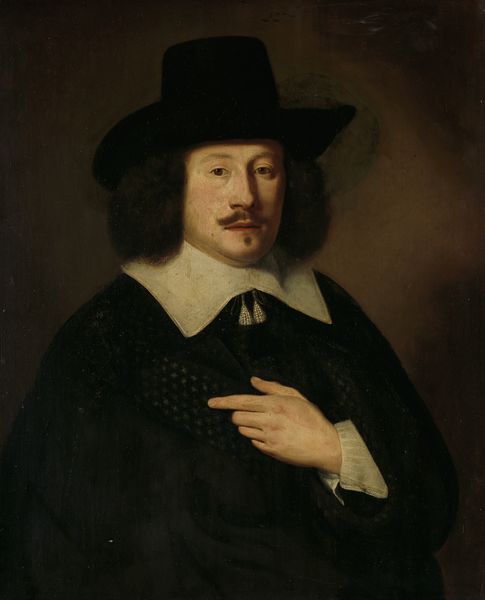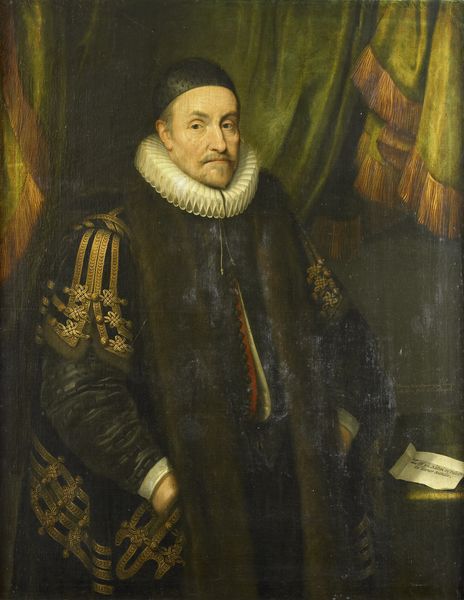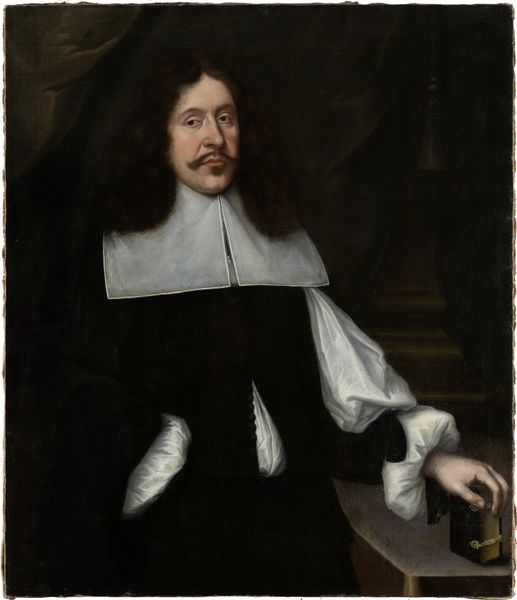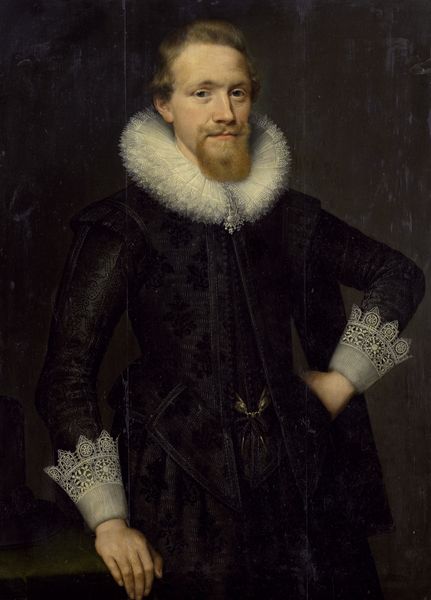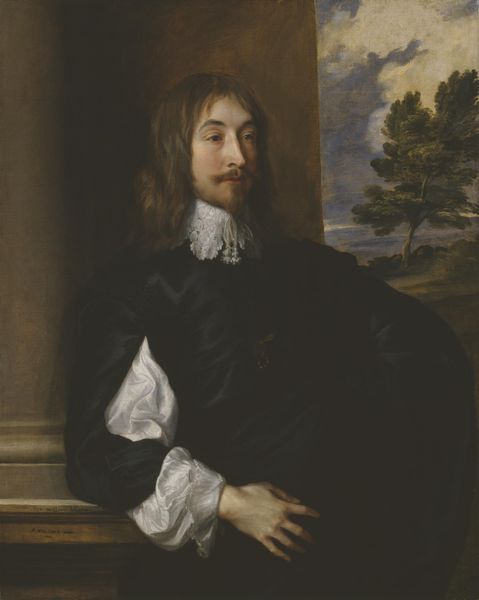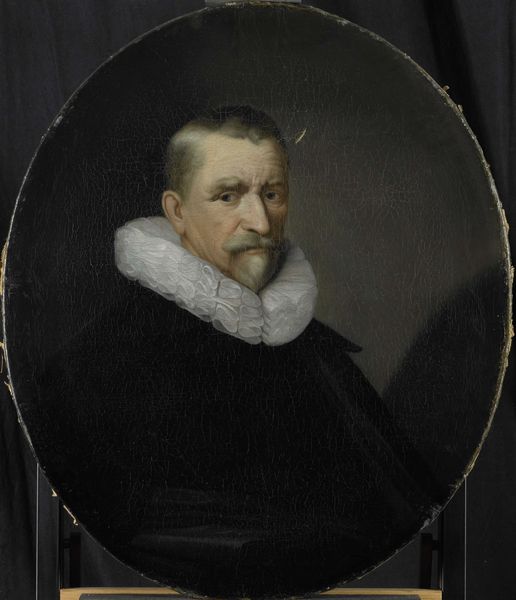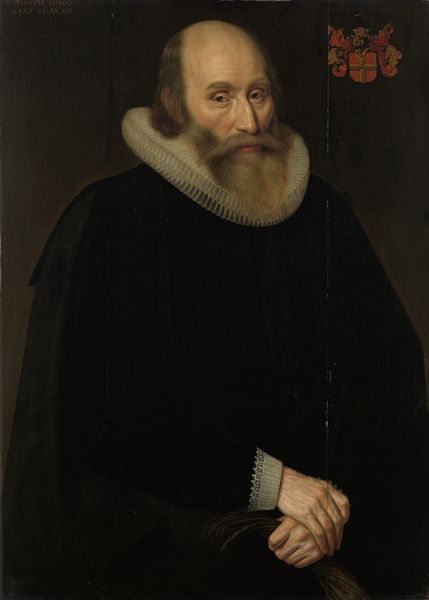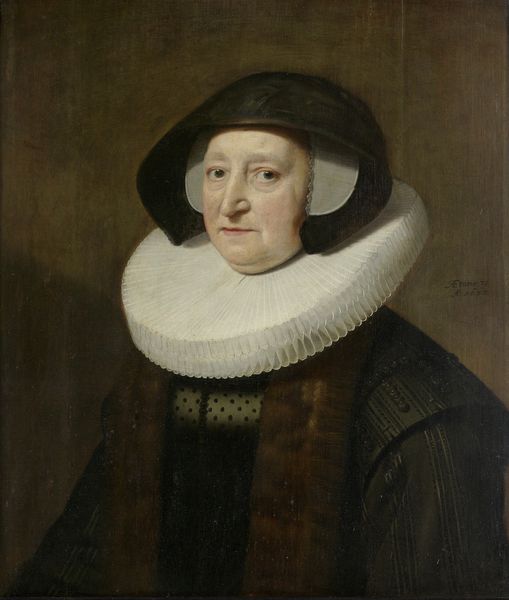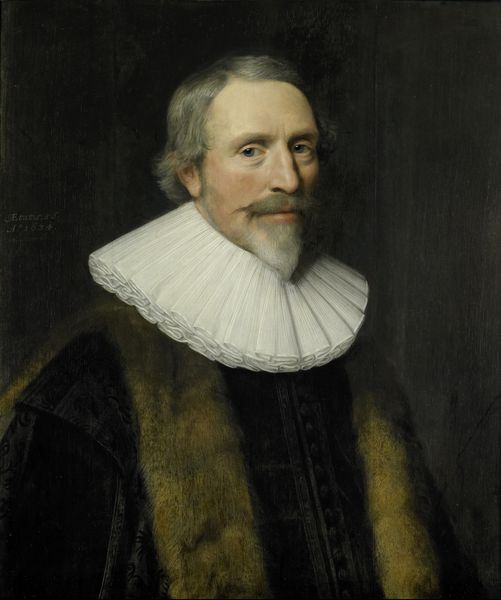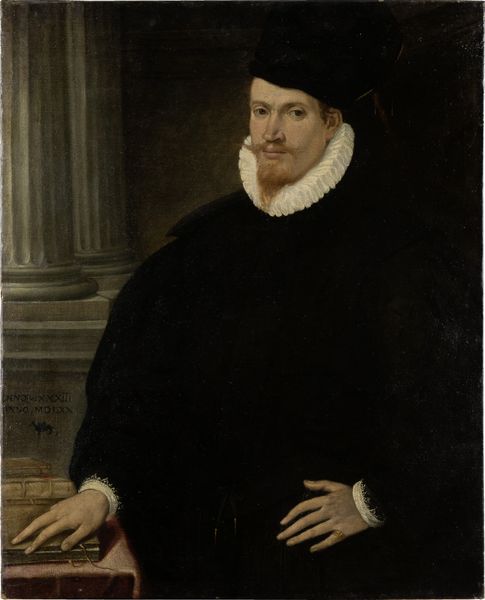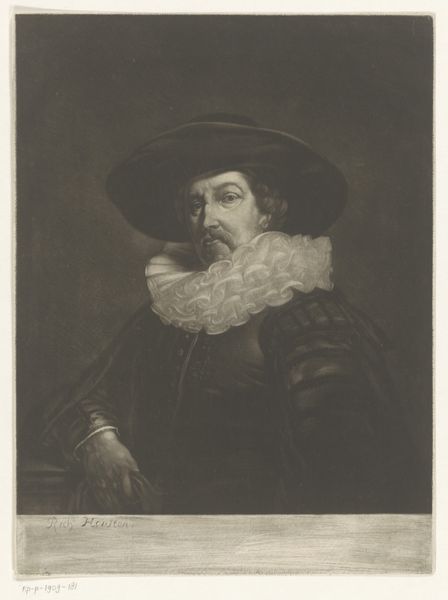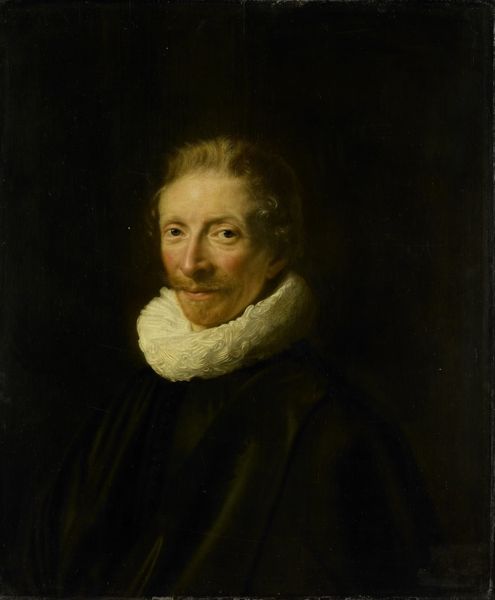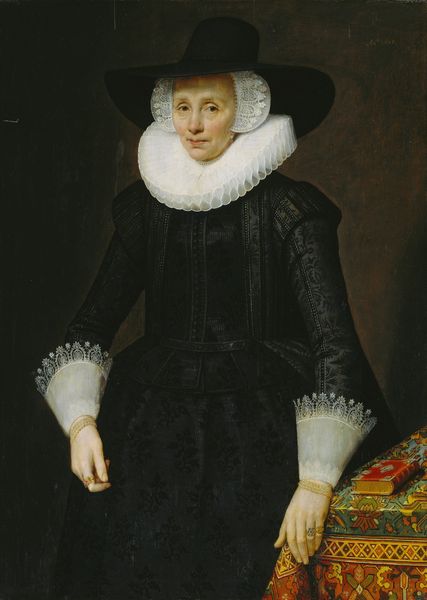
painting, oil-paint
#
portrait
#
baroque
#
dutch-golden-age
#
painting
#
oil-paint
#
realism
Dimensions: height 99 cm, width 84 cm
Copyright: Rijks Museum: Open Domain
Jan Lievens painted this portrait of Constantijn Huygens in the Dutch Republic, sometime in the mid-17th century. Huygens, a poet and composer, also served as secretary to two Princes of Orange. He was at the center of political power. In this painting, the dark clothing and somber background speak to the conventions of portraiture for the Dutch elite. But what does it mean to be ‘elite’ in the Netherlands at this time? How does it compare to other European courts? Unlike many aristocratic portraits, Huygens is not wearing overtly expensive clothing, and his expression is thoughtful, rather than haughty. The sober coloring would have appealed to the Calvinist sensibilities of the Dutch Republic, where displays of wealth were frowned upon. To understand this painting better, it would be interesting to compare it with portraits from other European countries, and also research more about the institutions with which Huygens was connected.
Comments
rijksmuseum about 2 years ago
⋮
Constantijn Huygens was secretary to Stadtholder Frederick Henry and a notable connoisseur. In his autobiography, he described how this painting was executed. Lievens painted the portrait in two stages, first the clothing and the hands, and then the face. This explains why the scale is a bit off: the head is too small in relation to the body.
Join the conversation
Join millions of artists and users on Artera today and experience the ultimate creative platform.
